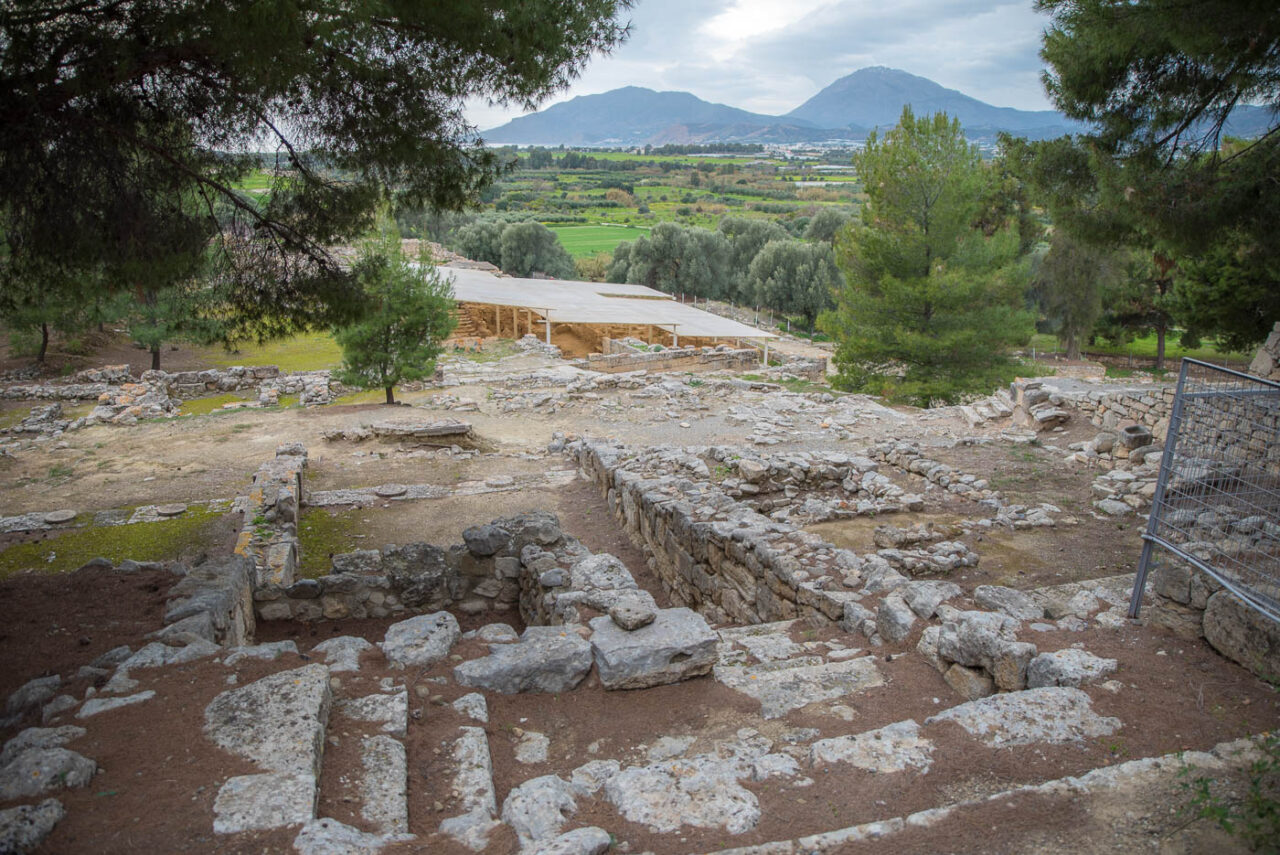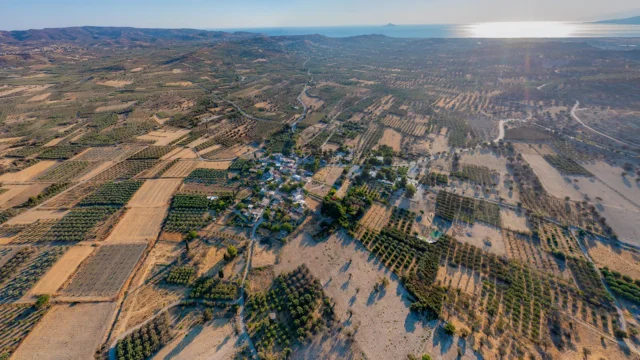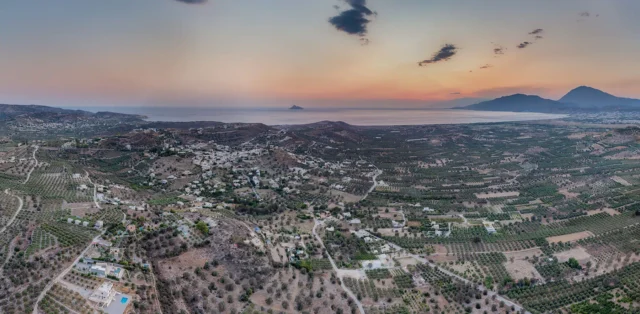


Located in the Messara Plain of Crete, the archaeological site of Agia Triada provides a unique window into Minoan daily life and societal structures. Excavations have revealed an extensive settlement, including a prominent structure known as the Royal Villa, along with houses, workshops, and burial sites. The site’s proximity to the Palace of Phaistos suggests a close political and economic relationship between the two centers.
The Royal Villa: A Mini-Palace?
The Royal Villa, though smaller than the grand palaces of Knossos and Phaistos, exhibits characteristic Minoan architectural features such as light wells, shrines, storerooms, workshops, and courtyards with terraces. The presence of Linear A tablets and clay sealings indicates administrative activities and possibly a local bureaucracy. However, the villa’s exact function remains debated, with interpretations ranging from a summer palace for Phaistos’ ruler to a local administrative center or even a temple complex.
A Wealth of Archaeological Finds
Agia Triada has yielded numerous significant artifacts, including the famous Hagia Triada sarcophagus depicting funerary rites, the Chieftain’s Cup, the Boxer Rhyton, and the Harvester Vase, all showcasing exquisite craftsmanship. The site also boasts the largest cache of Linear A tablets found at any Minoan site, providing valuable insights into the administrative and economic systems of the time.
From Minoan to Mycenaean: A Changing Landscape
The site’s history spans from the Early Minoan period to the Postpalatial period, with evidence of Mycenaean influence in later phases. After the destruction of the Royal Villa around 1450 BC, the area was deserted until the arrival of the Mycenaeans. A new “agora” (marketplace) and a Mycenaean megaron were built over the villa’s ruins, indicating a shift in cultural and political dynamics.
Burial Practices and Religious Significance
The cemetery at Agia Triada reveals a mix of Early Minoan tholos tombs and Late Minoan chamber tombs, reflecting evolving burial customs. The presence of clay larnakes (sarcophagi) and the famous painted sarcophagus highlight the importance of funerary rites in Minoan society. The villa’s tripartite shrine, possibly aligned with astronomical events, further underscores the significance of religious practices in the lives of the inhabitants.
Agia Triada: A Multi-Layered Archaeological Site
Agia Triada’s complex history, spanning different periods and cultures, is reflected in its diverse architectural remains and artifacts. The site’s strategic location, economic activities, administrative functions, and rich cultural expressions offer a multifaceted glimpse into Minoan civilization and its interactions with the broader Mediterranean world.
Agia Triada Archaeological Site: Key Points
- Construction Period: Early Minoan – Postpalatial Period (c. 3000-1100 BC)
- Location: Messara Plain, Crete, Greece, near Phaistos
- Dimensions: Excavated area of 135 by 135 meters
- Historical Significance: Major Minoan settlement with a significant villa complex, offering insights into Minoan everyday life, administration, and cultural practices.
- Current Status: Archaeological site open to the public, featuring the well-preserved Royal Villa, houses, workshops, and burial sites.
You will find a permanent exhibition of the findings in Messara Museum. To find Messara Museum in the Panotours site, please follow the link.
References
ATTENTION! Out of season, visiting is possible only by prior arrangement (I found it closed)
I remember there was a small Orthodox church on the top. There is a picture of St. George inside.





































